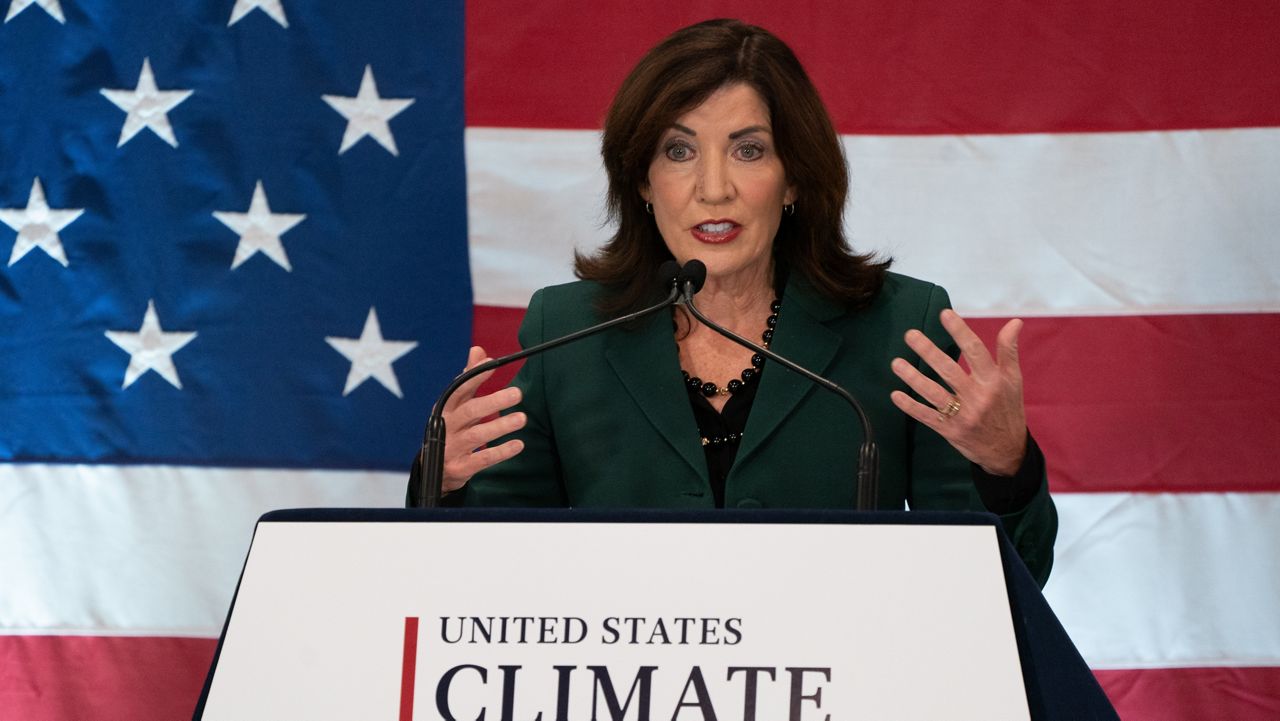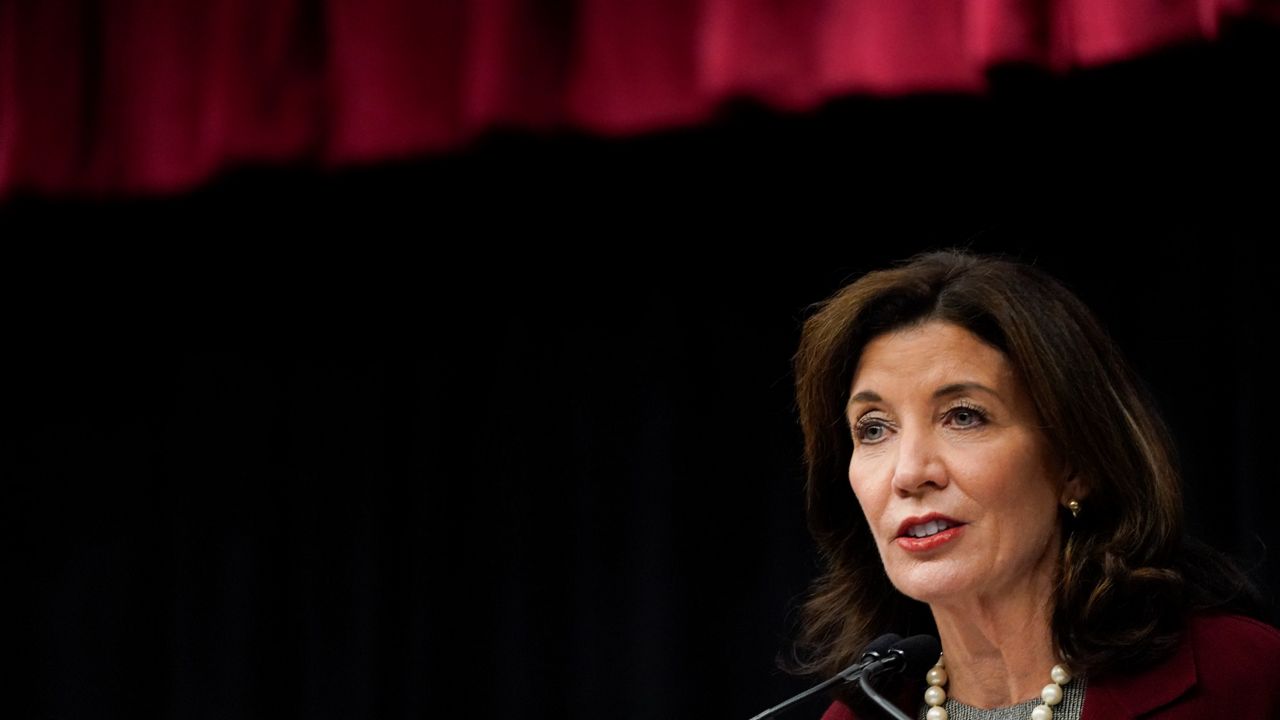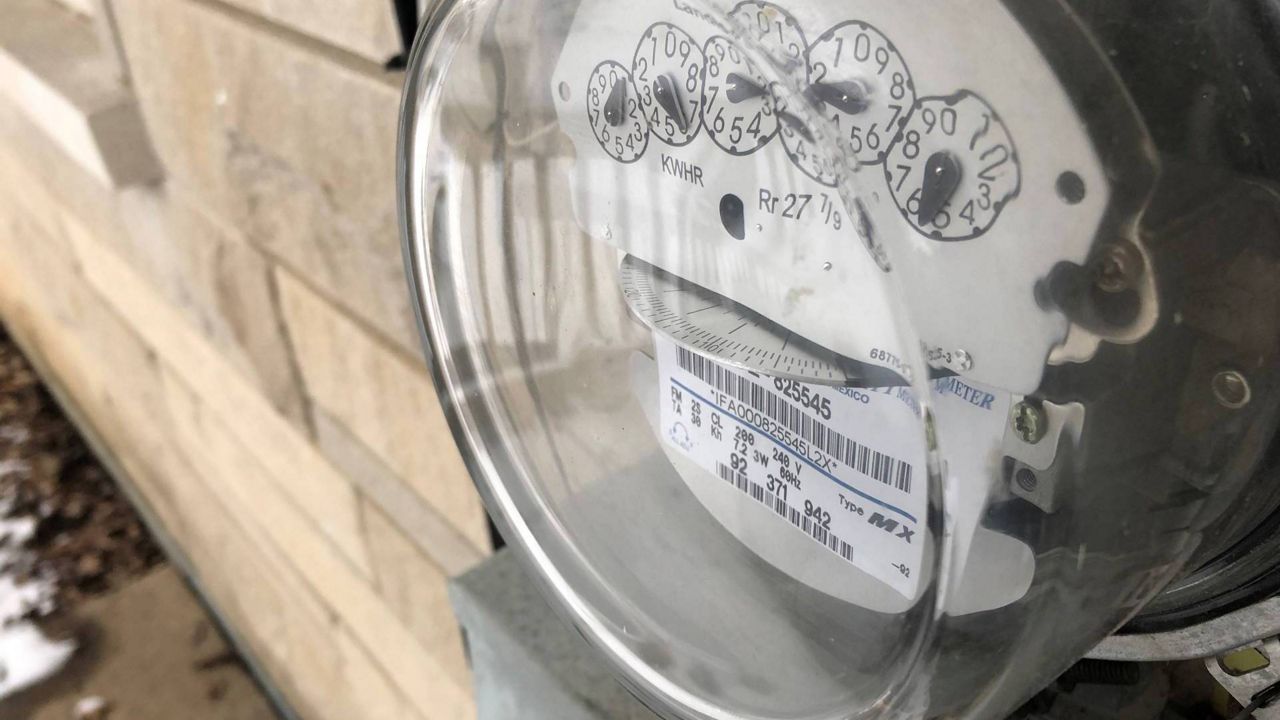This week, the city issued final rules that will govern enforcement of the Local Law 97, which sets a series of emission targets.
The goal is to reduce building emissions 40% by 2030 and 80% by 2050.
What You Need To Know
- Local Law 97, the city’s landmark building emissions bill, is set to kick in Jan. 1
- This week, city officials issued the final rule package that will govern enforcement of the law
- The city estimates about 1,600 of the 50,000 buildings subject to the law are out of compliance with 2024 targets
- Non-compliant buildings will be granted a two-year grace period if they agree to a binding decarbonization plan
“There are roughly 50,000 buildings that are covered by Local Law 97,” said Rohit Aggarwala, commissioner of the city’s Department of Environmental Protection. “All of them have to comply with the law as of Jan. 1, 2024.”
The overwhelming majority of buildings have already met the 2024 benchmark; the city estimates about 1,600 buildings are out of compliance. The necessary retrofits can be prohibitively expensive.
“It costs money, and we have a very diverse group of building owners within New York City,” said Meera Joshi, the city’s deputy mayor of operations, at a news conference this week.
“This law covers co-ops on the Grand Concourse and condos in Flushing,” Aggarwala said. “It’s not all fancy buildings.”
As a concession, the city will give out-of-compliance buildings a two-year grace period, allowing them to avoid hefty fines, if they agree to a binding decarbonization plan that will bring them into compliance by 2027.
Some climate activists opposed any grace period, calling it a giveaway to wealthy interests.
“The real estate lobbyists won,” said Pete Sikora, climate campaigns director for the advocacy group New York Communities for Change. “The real estate lobby always exaggerates costs on any new regulation, any new law that they fought against that makes them reduce pollution or increase safety.”
Aggarwala, who is the city’s chief climate officer, says the focus is on helping owners meet the targets.
“Local Law 97 was called the Climate Mobilization Act, it wasn’t called the Climate Penalties Act,” Aggarwala said. “And what we have got to do, what will save the planet, is not issuing a bunch of fines.”
“Compliance is ultimately the goal,” Joshi said. “We all lose if all we’re doing is issuing violations, because the point is to clean our air.”
Some critics in the City Council say the law is still too onerous for middle-income co-op and condo owners. One bill proposed by Republican Councilwoman Vickie Paladino, who represents parts of Queens, would push back enforcement for seven years.
Democrat Councilwoman Linda Lee’s bill would make fines proportionate to a building’s property value.
“We’re not the ones that are saying, ‘Oh, climate change is not real.’ It is very real and we need to do something about it, and there’s no question about that,” Lee, who represents parts of Queens, said in an interview. “But I think it has to be done in a more thought-out way.”
For now, the law will go forward under the newly issued rules — whether buildings are ready or not.




%20PKG%20local%20law%2097%20final%20rules%20CLEAN%20FIX?wid=320&hei=180&$wide-bg$)




